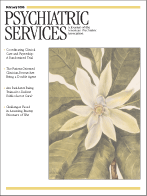Treating patients with co-occurring disorders is incredibly complex and demanding. Daily challenges include decisions about which disorder requires more immediate attention, who is appropriate for programs, how to treat symptoms of co-occurring disorders simultaneously, and how to support clinicians who struggle with their own limitations in training and confidence. To top it all off, most treatment systems and aftercare options are set up to treat one disorder or the other, a reality that leaves a huge proportion of these patients underserved and improperly treated.
Treating Co-occurring Disorders: A Handbook for Mental Health and Substance Abuse Professionals, by Edward Hendrickson, Marilyn Schmal, and Sharon Eckleberry, addresses many of these concerns. The book begins by identifying the need to treat co-occurring disorders simultaneously in one setting, pointing out that sequential or parallel treatment options are essentially inadequate. The authors use research and their own clinical experience in treatment, supervision, consultation, and training in presenting their positions. Underlying the entire book is the explicit understanding that differential diagnosis, assessment, and treatment are difficult because of the incredible diversity of the population itself and the continuum of possible symptom configurations.
The first chapters outline the prevalence of specific co-occurring disorders, providing symptom descriptions directly from DSM-IV and how they interact with substance use. The authors present treatment implications that are direct and helpful for both new and experienced clinicians alike. They next address the complexities of differentiating substance-induced versus true co-occurring disorders by identifying assessment tools and diagnostic questions for clinicians. They discuss the implications of various combinations of severity and duration of substance abuse and mental illness, as well as their relationship to each other, stressing the importance of understanding why clients use substances.
The authors devote a major portion of the book to the specific treatments for dual diagnosis in terms of individual case management as well as group and family treatment, providing useful information about treatment tasks, foci, and common traps. They do this comprehensively and use case examples. One of the most helpful assertions the authors make is that decisions about intake and treatment need to be tailored not only to patients' motivation levels but, just as importantly, to their impairment levels.
Because it is clear that an appropriate treatment setting for every possible combination of disorders does not exist, the authors of this text address the need for clinicians to expand their skills and frames of reference in order to be effective. They also provide helpful direction for supervisors who are trying to make that possible. The book stresses the importance of understanding and accepting that matching the treatment setting to the patients' needs will not always be optimal and that clinicians need to adhere to a competency-based focus in which small changes are celebrated. Treating Co-occurring Disorders is an extremely valuable resource for professionals in the field. Practical, specific, and easy to read, it has helped immeasurably in my practice.

